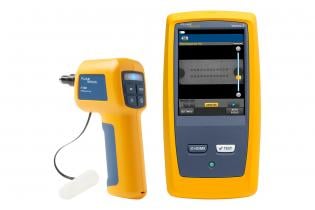Improve efficiency with high-tech robotic vision systems.
The Role of Optical Fibre Testing in Ensuring Quality and Effectiveness in Connectivity Solutions
In today's rapidly advancing digital landscape, the relevance of optical fiber testing can not be overemphasized, as it serves as a keystone for ensuring the high quality and efficiency of connection solutions. As innovation continues to development, the future of optical fibre testing poses appealing obstacles and chances that warrant closer assessment.
Importance of Optical Fiber Screening
The significance of optical fiber testing can not be overemphasized in ensuring the stability and performance of interaction networks. As the backbone of contemporary telecommunications, optical fibers assist in high-speed information transmission, making their dependability vital to operational success. Checking serves as an aggressive procedure to identify possible issues such as signal loss, depletion, and physical damages, which can compromise network efficiency.
Regular screening enables the confirmation of installation top quality and the detection of issues that can impact information integrity - optical fibre diameter analyser. By employing extensive testing procedures, network operators can mitigate the dangers related to network failings, consisting of downtime and economic losses. Optical fibre testing ensures compliance with industry criteria and laws, boosting the total high quality of service offered to end-users.
Eventually, the methodical assessment of optical fibres adds to the longevity and efficiency of communication systems. It enables stakeholders to make educated decisions concerning maintenance, upgrades, and troubleshooting. In a landscape where data is increasingly essential, focusing on optical fiber testing is vital to maintaining durable and reliable connection remedies, thus supporting the needs of contemporary electronic settings.
Sorts Of Optical Fibre Examinations
Different testing approaches are used to guarantee the functionality and reliability of optical fibers within communication networks. These tests can be generally classified into two major types: installment tests and maintenance examinations.
Installation examinations are carried out right away after the setup of optical fiber cords to verify their efficiency and integrity - robotic vision. The most common installment tests consist of Optical Time-Domain Reflectometry (OTDR) tests, which analyze the high quality of the fiber by determining mistakes or breaks, and end-to-end loss tests, which determine the complete optical loss from one end of the fibre to the various other
Maintenance examinations, on the other hand, are performed occasionally to guarantee recurring performance and spot possible issues with time. These include aesthetic evaluation, which checks for physical damages or inappropriate installations, and connection tests, which validate that the signal can travel through the fiber without disruption.
In addition, advanced tests such as Polarization Mode Dispersion (PMD) and Chromatic Dispersion (CD) tests can be performed to evaluate the fibre's performance under numerous problems. By using these diverse testing techniques, specialists can preserve high criteria of quality and dependability in optical fiber networks.
Advantages of Regular Evaluating
Normal testing of optical fibers plays an essential duty in preserving the total efficiency and reliability of interaction networks. By conducting routine assessments, companies can ensure that their fibre optic installments fulfill market requirements and run effectively. This aggressive approach aids to determine potential weak points and destruction gradually, permitting timely interventions before problems escalate.

Cost-effectiveness is one more advantage. By dealing with small concerns early, organizations can avoid the high expenses related to major repair work or system failings. Normal screening additionally cultivates compliance with regulatory requirements, making certain that the network complies with essential security and performance criteria.
Typical Issues Identified
Recognizing typical problems in optical fiber networks is essential for preserving optimal efficiency and reliability. Numerous elements can add to interruptions, consisting of physical damages, bad installment methods, and ecological influences.
Physical damage, such as bends, breaks, or abrasions, can significantly deteriorate signal top quality. Improper setup strategies, including extreme stress or poor securing of cords, might lead to enhanced depletion and loss of connection. Additionally, environmental aspects such as temperature level fluctuations, wetness access, and rodent disturbance can compromise the stability of the fiber.
Adapter issues also frequently you can try these out develop, with inappropriate alignment or contamination causing increased insertion loss. Moreover, splicing mistakes can introduce considerable signal degradation if not executed with precision.

Resolving these usual problems with regular optical fibre testing not only boosts network integrity however likewise maximizes general performance, ensuring that connection options remain durable and effective.
Future Trends in Examining
As the demand for high-speed connectivity remains to rise, the future of optical fiber testing will significantly concentrate on automation and advanced analytics. The assimilation of fabricated intelligence (AI) and artificial intelligence (ML) in screening processes will certainly make it possible for a lot more efficient data analysis and anticipating upkeep, lowering downtime and boosting total network reliability. Automated screening solutions will enhance the evaluation and qualification of fibre networks, lessening human error and increasing testing throughput.
One more considerable fad is the fostering of remote screening modern technologies. As the deployment of fibre networks expands into remote and underserved areas, remote testing abilities will certainly permit technicians to check and diagnose network problems without physical visibility, thereby decreasing functional costs and enhancing feedback times.
Furthermore, there will be a change towards try this website even more detailed screening standards that encompass not just traditional loss dimensions yet additionally efficiency metrics such as latency and data transfer use. This alternative technique will help with better network management and optimization approaches.
As these trends evolve, the optical fiber testing landscape will not just improve the quality and performance of connection solutions yet likewise support the expanding intricacies of contemporary communication networks.
Verdict
In final thought, optical fiber testing serves as an essential component in keeping the stability and efficiency of interaction networks. The recurring commitment to regular screening not only improves information transmission yet also aligns with market standards, cultivating integrity in network frameworks.